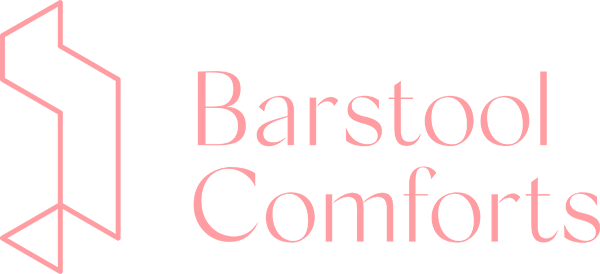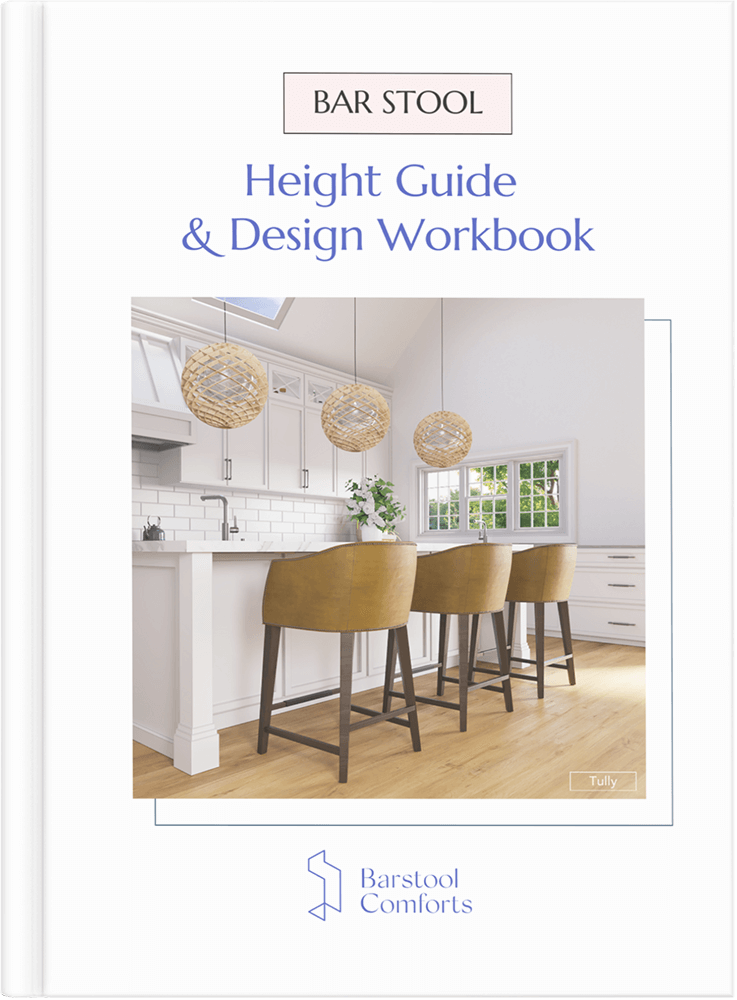Do you love lots of color, pattern, and decor? Then maximalism might be for you!
Think of it this way: Minimalism is about keeping things simple and clear. Maximalism is about celebrating plenty, using bold colors, and mixing different patterns and textures.
Why It’s Popular
Maximalism is sweeping the scene, and it’s more than just a trend.
Dive into a world where every corner pops with zesty colors and each wall tells a tale. It’s like jazz for your home; spontaneous, bold, and undeniably captivating.
Think of maximalism as your personal stage, spotlighting the quirky and extraordinary chapters of your life. When you embrace it in your home, you’re not just decorating—you’re weaving a vibrant tapestry that shouts, “This is me!”
Who knew that design could be such an exhilarating journey?
What Sets Maximalism Apart
Bold Yet Balanced Colors
While a maximalist room loves a good splash of color, it’s all about blending — from serene pastels to the occasional daring neon accent.

Decor with a Story
A well-traveled globe, a vintage clock, or a modern art piece; each item adds its own chapter to the room’s narrative, embodying the essence of maximalist decor.

Distinctively You
The best part? Maximalism lets your personality shine. It’s about curating a space that reflects your passions, memories, and flair.

Common Questions
Maximalism and eclectic interior design both champion diversity in interior styling, but they have distinct nuances. Maximalism thrives on abundance, layering colors, patterns, and accessories in a sensory-rich tapestry, often spotlighting personal stories with every item.
Eclectic interior design, on the other hand, emphasizes harmoniously blending elements from different eras, cultures, and design philosophies. While maximalism dives deep into the “more is more” mantra, eclectic design is all about achieving balance and unity amid diversity. So, while both styles celebrate variety, their approach and end goals set them apart.
To craft a maximalist space without veering into chaos, begin with a foundational anchor, be it a neutral wall or a standout furniture piece.
While diving deep into vibrant patterns, textures, and colors, maintain cohesion by sticking to a complementary color palette.
Balance is pivotal: juxtapose quieter areas with vibrant ones, and mix large pieces with smaller details.
Thoughtfully curate and group similar maximalist decor to give the eye structured resting spots, and don’t shy away from occasionally rotating decor to keep the look fresh.
Embrace both the abundance and moments of negative space, and above all, trust your instincts, letting your unique personality shine through in the design.
The roots of maximalism can be traced back to various historical periods and cultures that celebrated opulence and extravagance in design.
The lavish interiors of Baroque and Rococo Europe, with their intricate details, ornate moldings, and bold color palettes, are early examples of a maximalist ethos.
Likewise, many Eastern cultures, with their rich textiles, intricate patterns, and layered aesthetics, have long embraced principles aligned with maximalism.
The 1960s and 1970s also witnessed a resurgence of maximalist tendencies, especially in the bohemian and psychedelic movements. Over time, as reactions to more restrained and minimalist trends, the pendulum has periodically swung back towards maximalism.
Modern maximalism, as we recognize it today, is a culmination of these influences, offering a counterpoint to the stark, simplified aesthetics of late 20th and early 21st-century minimalism.
Choosing a color palette for a maximalist space is a delightful exploration of creativity and personal taste.
Start by pinpointing a primary color that resonates with you or a dominant piece of furniture or artwork you want as a focal point. From there, expand to complementary or contrasting hues, ensuring they evoke the desired mood or atmosphere. This process is at the heart of customized interior design, allowing your personal tastes to guide the room’s direction.
For maximalism, you’re not confined to just two or three shades; you can embrace a spectrum of colors.
However, it’s essential to find a common thread—a tonal quality, temperature, or mood—that ties your palette together.
Layering is the key: use deeper tones for primary pieces, medium shades for secondary furnishings, and bright or light hues for accents.
While maximalist spaces thrive on diverse color, maintaining a sense of harmony prevents it from feeling jarring.
Remember, maximalism is about curated abundance, so ensure every chosen hue has a purpose and contributes to the overall narrative of your space.
Maximalism, in its essence, celebrates abundance and personality, which means there’s a broad spectrum of furniture and decor that fits the bill. However, certain items lend themselves especially well to this style.
Ornately detailed or boldly upholstered furniture pieces, like a velvet sofa in a rich hue or an intricately carved wooden table, can serve as fantastic focal points.
Layered textiles, such as plush rugs, decorative throw pillows, and sumptuous drapes, add depth and dimension. Eclectic lighting fixtures, from grand chandeliers to quirky table lamps, contribute to the layered ambiance.
Wall decor is pivotal: think large artwork, tapestries, or even collections of smaller pieces arranged in a gallery style.
Shelving filled with curated objects, books, and plants further encapsulates the maximalist spirit.
While maximalism encourages a mix-and-match approach, the key is ensuring each item, be it a grand piece of furniture or a small trinket, resonates with the space’s overall theme and personal narrative.
Absolutely, when delving into the realm of maximalism interior design, one realizes it’s not an isolated entity. Instead, it’s a design approach that can beautifully meld with other styles.
Take boho, for instance. Bohemian design, with its eclectic mix of patterns, textures, and global influences, can easily be amplified with a maximalist touch. The result is a space that’s rich in layers, colors, and cultural artifacts, pushing the boho ethos to its vibrant limits.
On the other hand, combining maximalism with industrial design might seem counterintuitive given the latter’s raw, minimalist tendencies. However, it’s entirely possible.
Imagine an industrial loft space with exposed brick and beams, but filled with abundant decor, colorful art, and a mix of vintage and modern furniture. The stark, raw backdrop of the industrial elements provides a unique canvas for the “more is more” approach of maximalism, creating a dynamic interplay between the two styles.
In essence, when done thoughtfully, maximalism can intersect with virtually any design style, enhancing its character and adding a layer of personal expression.
Maximalism, while currently enjoying a resurgence in popularity, is rooted in design traditions that span centuries, suggesting that it’s more than just a fleeting trend.
Historically, various cultures and eras, from the opulence of Baroque Europe to the intricate details of many Eastern design philosophies, have embraced the principles of maximalism.
While design trends ebb and flow in response to societal changes, economic factors, and technological advances, the underlying human desire to surround oneself with objects of meaning, beauty, and personal significance remains consistent.
Maximalism interior design caters to this innate impulse, allowing for personal stories to be told through design. While its prominence might fluctuate over time, as all styles do, the essence of maximalism—a celebration of abundance and personal expression—ensures its place as a timeless design philosophy, continually finding relevance in new contexts and interpretations.
How Bar Stools Can Be a Focal Point in a Maximalist Design
Bar stools, though often seen as mere functional seating options, have the potential to be showstoppers in a maximalist setting. Here’s how:
Begin by choosing stools with bold patterns, vibrant colors, or intricate designs.
Materials like plush velvet, detailed woodwork, or metallic finishes can immediately elevate their presence.

Embellishments enhance the maximalist vibe.
Tassels, studs, or decorative metalwork can add an extra layer of detail to your stools.
Positioning them against a contrasting backdrop can make them pop even more.

The area around the bar stools can further accentuate their focal role.
Consider hanging pendant lights with bold designs directly above them or adding a piece of wall art behind.
A plush rug beneath the bar area can also tie the space together, making the stools the undeniable center of attention.

Additionally, accessorizing the bar counter with curated objects, decorative trays, or vibrant floral arrangements can create a dynamic interplay between the stools and their surroundings, making the entire area a cohesive maximalist decor haven.

Incorporating Maximalism
with Bar Stools
In essence, when adorned and positioned thoughtfully, bar stools can transition from mere seating options to the stars of a maximalist ensemble, encapsulating the “more is more” spirit in every stitch, shade, and silhouette.
Explore Our Collection
of Diverse Styles
Customization
Customization holds a pivotal role in maximalist interior design, primarily because maximalism is rooted in personal expression, storytelling, and a curated sense of abundance.
Personal Storytelling
Maximalism is as much about the individual’s story as it is about visual abundance.
Customized items such as furniture, artwork, or accessories allow you to weave personal narratives, memories, and experiences into the design tapestry, making spaces deeply intimate and reflective of your life.

Unique Character
One of the hallmarks of maximalism is its distinctness. Through customized interior design, customization ensures that the design elements are one-of-a-kind, setting the space apart from generic, off-the-shelf interiors. This uniqueness resonates with the maximalist ethos of celebrating individuality.
Quality Control
With customized pieces, there’s greater control over quality, materials, and craftsmanship. For maximalists, each item is not just decor, but a piece of art, and ensuring top-notch quality enhances the overall appeal and longevity of the design.
Emotional Connection
Customizing design elements often involves a deeper engagement with the creation process. This involvement fosters a stronger emotional bond with the space, making it not just a place to live, but a reflection of one’s soul and journey.
Maximalism Meets Customized Fun at Barstool Comforts
At Barstool Comforts, we specialize in custom-made bar stools, dining chairs, and tables, unlocking endless potential for your maximalist design vision.
Choose from wood or metal frames and personalize your cushions with a wide range of fabrics, vinyls, or leathers.
[ featuring our Ronny bar stools ]
With thousands of color mixes at your fingertips, and the option for some brands to incorporate your own fabric, achieving a maximalist interior through customized interior design has NEVER been easier or more exciting!
Quality and Durability
In a maximalist design, durability is key because maximalist spaces frequently showcase beloved, timeless items that homeowners want to cherish for years. A well-crafted piece of furniture can withstand the test of time, becoming a foundational element in the evolving maximalist story.
Our Furniture is Built to Last
At Barstool Comforts, longevity and craftsmanship take center stage.

Our metal bar stools boast welded joints and resilient powder-coated finishes.

We champion solid wood construction, robust fabrics, premium leather, and enduring swivel plates.

And to underscore our commitment to quality, every piece of furniture comes with a warranty.
Embrace Maximalism
Maximalism is a celebration of abundance, personal expression, and the “more is more” philosophy. It’s about weaving a rich tapestry of colors, patterns, and textures that resonate with individual narratives.
Celebrating Vibrancy
At Barstool Comforts, we understand the heart and essence of this vibrant style. Our pieces aren’t just furniture—they’re characters in your maximalist story.
Quality Beyond the Ordinary
With enduring craftsmanship, quality that’s guaranteed with a warranty, and a wide array of customizable options, we provide the perfect canvas for your maximalist dreams.
Dive into Endless Design Possibilities
So, dive into the world of maximalism and let Barstool Comforts be your trusted partner in personalized interior design. Embrace the bold, the beautiful, and the boundlessly imaginative with us. After all, in the world of maximalism, there are no limits—only possibilities.
Reach Out, We’ve Got You Covered
And remember, if you have any questions or need guidance, don’t hesitate to contact us. We’re here to help!










